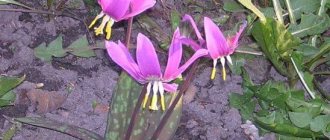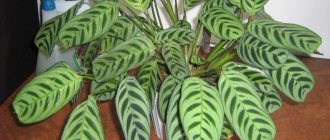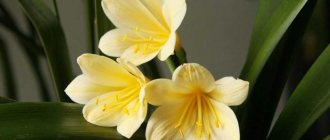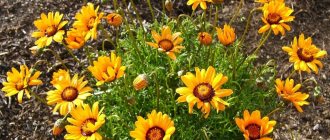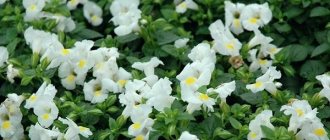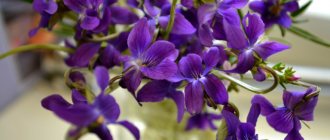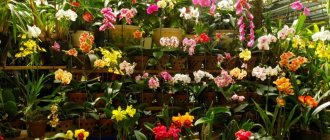Botanical description
Lunaria or lunaria (lat. Lunaria) is a genus of annual and perennial herbaceous plants of the Cruciferous (Cabbage) family.
The scientific name comes from the word “luna”, which literally means this celestial body, a satellite of the Earth. The source of fantasy was the appearance of a round, flat fruit-pod, which, after ripening, acquires a grayish tint and becomes translucent. Therefore, the plant was romantically nicknamed lunaria, lunaria, moon grass. Some pragmatic people trace the similarity of the fruits to a coin - the plant is also called silver grass, coin plant or silver ruble. Lunnik is the oldest plant of the Tertiary period, growing in deciduous forests. It has been cultivated in European countries since the 16th century. Massive deforestation puts it at risk of extinction.
Lunar is a plant 50-90 cm high, the stems are erect, covered with small fibers. The leaf blades are large, heart-shaped, with jagged edges, they are attached on long petioles, the arrangement is opposite.
Luna flowering
The flowers are large, lilac, lilac, violet or whitish in color, collected on the tops of shoots in paniculate inflorescences, they are fragrant.
After flowering, an elliptical-shaped fruit pod appears; the seeds are visible through the transparent partition. Seed germination is maintained for 3 years.
The small genus includes only four species, and only two of them are cultivated. They have their own characteristics of reproduction, differ in requirements for soil composition and lighting, we will look at everything in more detail.
Lunaria or lunaria is grown in gardens and on personal plots, and is used for landscaping parks and squares. A plant with original fruits is becoming increasingly popular not only among flower lovers, but also among landscape designers. Its alluring mystery does not leave you indifferent.
Interesting Facts
We recommend that you read
In addition to the fact that moonflower is a flower that, thanks to its extraordinary appearance, can perfectly decorate any garden or alley, it also has medicinal properties. It is used in folk medicine for the preparation of various medicinal tinctures for the treatment of sedative disorders, spasms of the stomach and intestines, and exhibits its miraculous effects in dropsy and severe edema. But due to the fact that the plant is an endangered species and is listed in the Red Book, it is not used in official medicine.
Lunar grass is also known to people under other names, such as lunaria, moon grass or silver grass. What is this flower, so beloved by all gardeners?
Lunar plant, which grows almost throughout Europe, is currently available in two varieties. This:
- annual moonweed;
- perennial moonflower or, as it is also called, reviving.
As for the first type, many gardeners plant it. But with the second, the situation is more complicated, and you can only see it in the botanical garden.
Growing lunaria from seeds
Lunaria seeds photo
When to sow lunaria in the ground
- Annual moonflower seeds are sown in open ground in May, but then flowering will occur only the next year.
- By the way, the seeds have excellent germination, so when sowing in open ground, you can immediately safely retreat 40 cm between seedlings.
- To get flowering this season, start growing seedlings.
How to plant lunaria from seeds to seedlings
Lunaria annual from seeds photo shoots
Sowing moonflower seedlings in March in cold greenhouses or at home on a windowsill. For sowing, select high-quality seeds - about 6 mm in diameter, dark brown in color.
- Fill the boxes or cassettes for seedlings with loose nutritious soil (it is best to use a universal substrate for growing seedlings), plant the seeds to a depth of 1-1.5 cm, and water well.
- Cover the top with glass or film, but ventilate daily.
- You will need diffused lighting, an air temperature in the range of 20-25 °C and moderate watering.
Lunaria annual photo of seedlings in cassettes
- Friendly shoots will appear after a week, then the shelter should be removed.
- At the stage of formation of a pair of true leaves, plant them in separate containers.
Transplant the seedlings into open ground at the end of April, make holes according to the size of the root system with a ball of earth and carefully transfer them. The distance between plants is 40 cm.
Pre-winter sowing of lunaria in the ground
The reviving moonflower is grown from seeds or propagated by dividing the bush. It is best to carry out winter sowing of seeds in open ground; sow almost before snow falls. Select a shady area of the garden, carefully dig the soil to a depth of about 20 cm, it is advisable to add garden lime and humus. Deepen the seeds into the soil by 3-5 cm. In spring, thin out the entrances to a distance of 40 cm between plants.
Planting and care
For growing an annual plant, the best option is an open place in the garden, where the sun's rays will always fall. Partial shade will also do. The soil should be well fertilized.
The initial stage of growing a plant is the selection of seeds.
Attention should be focused on their size and color. These must be brown seeds with a diameter of about 5-6 mm
One of the advantages of annual moonflower is the lack of special planting techniques. It is very easy to sow the plant. You only need to leave a small distance between the seeds, which will not require any replanting in the future.
Moonflower germinates in a fairly short time, and after 7-10 days you can see seedlings.
The main recommendation for caring for the plant is to insulate the silver plant. Nothing bad will happen if you don't do this. But in order to definitely preserve the flower and protect it from the influence of various negative external factors, you should still take some protective measures.
Lunaria or lunar plant in landscape design
Lunaria in landscape design photo
Lunaria or lunaria has a number of remarkable advantages: originality of appearance, ease of care, and the ability to grow well in the shade.
Most often it is planted in groups or combined in mixborders with other perennial crops. Do not plant the bushes too close; in close quarters the plant develops poorly and blooms poorly.
Let's consider several interesting variations of lunaria in landscape design:
As a humble neighbor
Set aside a separate place for the plant, plant individual bushes (literally 2-3 copies each) of honey roses, clematis, lilies, tulips, and daffodils. In the first year, they will delight in their growth with large foliage, and during flowering and fruiting, the moonflower will emphasize the beauty of such partners.
Unpretentious flower garden
Lunaria and allium with tulips and hyacinths photo
You don’t always have the time or the desire to garden; the idea of planting is a minimum of work. Combine with perennial plants that do not require careful care and self-sow. Suitable neighbors for lunaria are bells, lupins, foxgloves, aquilegia, barberry, cinquefoil, hydrangea, forget-me-nots, and daisies. A plastic mesh, which is installed during planting, will help maintain its shape; young shoots will grow through the cells.
gravel garden
Lunaria with other flowers photoLunaria with other flowers photo
The soil surface is covered with gravel, crushed stone or pebbles; in such conditions, weeds practically do not grow. When planting, they use unpretentious, beautiful plants - for example, our lunaria, which is planted in groups. Good partners will be fennel, wormwood, thyme, asters, geranium, tansy, beautiful feather grass, barley, angelica. Visually, such plantings are separated by low bushes or paths. It looks like wild vegetation; remove excess bushes to keep the plantings well-groomed.
Clearing in a shady area
Lunaria in a flowerbed photo
Thanks to its shade tolerance, lunaria can be planted in groups under trees or tall shrubs. Bright fuchsia will complement the composition.
Moorish lawn
Lunaria and cereals photo
Plant about 70% with bentgrass or fescue. Fill the rest of the space with moonflower, cornflowers, daisies, forget-me-nots, poppies, calendula, meadow clover, decorative flax, tar, and Iberis.
The angelic beauty of one of the most impressive flyers
When angelonias are ranked among the most beautifully flowering annuals, there is no question of any exaggeration. This is a unique annual plant whose beauty is simply mesmerizing. Angelonia is a real aristocrat. And its decorative features are best characterized by its popular nickname - “poor orchid”. Each individual flower of this plant is most similar in shape and beauty to orchids. Only the size of each flower is much smaller. But there are much more flowers in the inflorescences than in indoor princesses.
Outwardly, angelonia is a little reminiscent of diascia, but its shoots are not ampelous and flexible, but upright and rather rigid. Among gardeners who have already discovered this beauty thanks to exhibitions and fairs, it is also known as the “flower with an angel’s face.” In its homeland, in hot Mexico, angelonia is popular as a summer snapdragon.
Angelonias are a large genus of ornamental plants, including more than 30 species. Today in landscape design, Angelonias are represented by variety mixtures and variety groups, usually of hybrid origin, bred on the basis of Angelonia angustifolia. It is best to choose angelonias based on the color of the flowers from the seeds or seedlings available to you.
In height, these annuals can be either very modest, only about 25-30 cm, or large, more than 50-60 cm. But all angelonias form very lush bushes, spreading out, bouquet-shaped, elegant and attractive. Angelonias always look as if they were shaped by a master's hand, cut and leveled, but the bushes received such an ideal shape from nature. Their leaves are lanceolate, dark, with a beautiful serrated edge. If you rub the leaf between your fingers, the bright aroma of fresh apples will fill the entire space around. Funnel-shaped, with a wheel-shaped bent corolla, the flowers are collected in a slender and very elegant inflorescence up to 20 cm long.
The main advantage of angelonias is their very long and spectacular flowering. This annual plant does not bloom from spring until frost, but does not know competitors all summer. But the duration pales in comparison to the originality of the flower shapes. A unique feature of angelonia is the ability to produce new flower stalks even at the end of flowering. It not only opens the buds of already formed flowers, but after cutting off the faded shoots it produces full-fledged new ones.
The color range of angelonias is also very representative. The flowers of the plant are painted in various shades of purple, white, pink, blue, while different flowers sometimes combine several shades, and most angelonias have a watercolor color, with transitions from light to more intense.
Angelonia is an excellent cut crop. In terms of the grace and beauty of its inflorescences, it can compete with any greenhouse or hothouse plant. She is especially good in large bouquets. Angelonia flowers do not fade for more than 10 days and emit the same apple-like aroma with a slight grape tinge as the leaves when rubbed. You will never find such an airy and lacy plant again.
Lunaria as a dried flower
Lunaria dried flower photo
Dried stalks of the coin plant with seeds are used to create dry bouquets, panels, paintings and other compositions.
An elegant bouquet will last a long time in a vase. You can add celosia, amaranth, helichrysum, statice, craspedia, Volzhanka, gypsophila, and sapling to lunaria.
Rules for choosing annual flowers for the garden that bloom all summer
In order to choose the right annual flowers for your dacha that bloom all summer and not make mistakes in creating landscape compositions, you should pay attention to some important points:
- climatic features;
- landing place;
- flowering period;
- landscape features;
- plant color palette.
Mixing plants in the same flowerbed should be done with extreme caution, having first studied each plant’s preferences for growing conditions. In one mixborder it is better to place annuals with the same requirements for lighting, soil composition, fertilizing, watering, etc.
The flowering period is also an important aspect when choosing plants for a flower bed. It is easiest to choose constantly blooming and unpretentious varieties, so as not to make a mistake and prevent bald spots on the site from flowers that have not blossomed or have withered from heat or frost.
And how to successfully choose annuals by color - this depends on the taste characteristics of each gardener involved in landscape design.
Types of lunaria with photos and names
Annual moonflower Lunaria annua
Annual moonflower Lunaria annua photo
Contrary to the name, it is a biennial crop. In the first year the bush grows, and flowering occurs in the second year of life. Branched stems reach a height of 60 cm. The leaf blades are broadly ovate, have a rough-hairy coating, jagged edges, the leaves are almost sessile or attached on short petioles. White, lilac or violet flowers are collected in a racemose inflorescence; the flowering period occurs from May to mid-June.
Annual moonflower seeds photo
Then disc-shaped seed pods appear, which ripen by September, acquiring a light brown hue. They are used as dried flowers. To do this, after the seeds have ripened, the stems need to be cut off at the root and dried in a ventilated, dry room for two weeks.
In English-speaking countries, the plant has a number of names: “honesty” - honesty, due to the transparency of the fruit, moonwort - moon grass, moneyflower - money flower, pennieflower - penny flower.
Location
Seedlings are planted in open ground at a distance of up to 30-40 cm from each other. But since lunaria seeds are characterized by an almost absolute ability to germinate, they can also be immediately sown in a permanent place at a distance of up to 40 cm from each other to a depth of 3 cm.
For one hundred percent germination of seeds, they must be properly sown in a suitable place with fertile soil.
The main distinguishing feature between perennial and annual moonwort is their different attitude to sunlight. One-year-old moonflower without the rays of the sun will not be able to grow and develop normally, while perennial moonflower in sunlight begins to fade, dry out, turn yellow, turn pale and become smaller.
Therefore, optimally sunny and open places are suitable for annual lunaria; reviving lunaria feels better in the shade. Partial shade may suit both of them to some extent. Such an important nuance as illumination must be taken into account when planting lunaria.
The annual moonflower does not show any special requirements for the nutritional value of the soil, it is absolutely not capricious, but still feels better, grows, blooms, and develops on fertile soils. Therefore, the composition of depleted soil needs to be improved using peat, compost, and adding standard mineral fertilizers.
Lunaria revived is more demanding on the composition and nutritional value of the soil; it will feel good in soils that are sufficiently moist and fertilized with humus. The soil for planting and growing perennial moonflower should be loose, sufficiently aerated, and full of nutrients.
For the full development of this type of lunaria, the soil must be loosened well before planting, digging to a depth of at least 20 cm with the addition of humus (4 kg per square meter of area). It wouldn't hurt to add a little lime.
Lunaria is unpretentious in terms of care. The annual species of this plant can grow in any conditions. The perennial lunar plant is capable of growing in one place for a long time without transplantation, which is extremely undesirable for it.
But if you provide it with good soil in a shaded place, then you won’t have to feel any special care about caring for it.
After planting the seeds, the beds must be watered. This will ensure that sprouts appear within a few days. Annual lunaria is watered only during dry periods. Perennial lunaria loves abundant watering, but you should not do this too often, a couple of times a week is enough.
If the summer weather is dry, you need to water more often. The reviving moonflower does not tolerate a lack of moisture as well as its excess. But you must also remember that stagnation of moisture can lead to rotting of the root system. After the fruits on the plant finish ripening, you need to stop watering it.
Fertilizer feeding is applied to the soil as soon as the growing season begins until mid-summer. It happens twice a month. For this, various mineral fertilizers containing phosphorus and potassium, ammonium sulfate are used.
Organic fertilizers and humus can be used as fertilizing. It is best to dilute fertilizers in water and water the plants at the roots with the resulting solution.
Historical reference
The name lunar (lunaria) comes from lat. "luna". Lunaria is a unique plant, and received such a poetic name because of the shape and color of the partitions of the fruit, which outwardly resemble the celestial body - the moon. The pods of the plant hide the secret of the moonflower. If the outer plates of the pods are carefully removed, a thin, parchment-like, mother-of-pearl partition will remain.
The seeds of the plant are placed on it - usually four on each side. The partition from the pod has an oval-spherical shape. If all the pods are removed from the stem, leaving only mother-of-pearl balls-partitions, the plant becomes especially decorative, where each of the translucent oval leaves looks like a small moon.
We invite you to familiarize yourself with Field sow thistle: a description of measures to combat a malicious weed
Lunaria has been known in culture since the end of the 16th century, or more precisely, since 1597. In the Middle Ages, the reviving moonflower was grown as an ornamental garden plant: dried flowers from this crop looked especially colorful in bouquets in the autumn-winter period. Silver “coins” not only delighted residents with their grace; it was believed that the magical plant attracted real money and good luck to the house.
The British noticed another feature of the unusual plant and called it “honesty,” which means honesty. The name is based on the transparency of lunaria fruits: through the thin plates of the pods, black dots - the seeds of the plant - are clearly visible.
Growing Angelonias as a Perennial
Angelonia does not have to be grown only as an annual plant. It cannot stand even the slightest frost, but it is quite possible to preserve it from year to year. After flowering, it is enough to dig up the angelonias and plant them in pots (if they are not already growing in containers) and take them to the rooms. By growing it in the cold season as an ordinary houseplant, and just watering it regularly, maintaining light soil moisture, you will ensure that next year the bush will continue its life in the garden.
If you want to decorate your rooms with winter-blooming angelonias, the plants need to be prepared in advance for moving to other conditions. In August, all shoots should be cut in half, and in September the pots should be taken indoors. With normal watering, angelonia will bloom again in November. Unfortunately, after such repeated flowering, angelonia will not be able to survive another year, but it will still be useful as a mother plant for cuttings. It is enough just to prune the shoots in February by cutting cuttings - and you will have a new generation of angelonias for the garden.
Angelonias can be grown not only in the garden in open soil or pots, but also in indoor culture. These are living bouquets that have no equal in beauty in a summer interior. Angelonias have a fairly compact rhizome and are content with a minimum of soil. That is why they feel equally good both in pots and in the flower garden.
Lunaria | Garden and vegetable garden - online magazine about dachas
Lunaria, or lunaria, is a classic representative of the Cruciferous family. Typically, amateur flower growers grow annual moonflower from seeds. In the nature of the central zone you can find only wild representatives of this species. It’s a completely different matter, the perennial reviving moonflower, which grows in shady conifers, in mixed forests, among coastal shrubs, along river banks and in ravines.
Recently, this species of moonflower has been included in the number of regionally protected plants. Both types of lunaria can be found in garden plots. There are many similarities in caring for them, but there are also some differences. For example, annual moonflower grows better in a sunny place, and reviving moonflower grows better in a shady place.
Lunar grass, moon grass or lunaria are rarely found in the open spaces of summer cottages. Undoubtedly, this is undeserved, because a piece of landscape design will become brighter, more unusual and, of course, charming. This plant has fruits of cosmic beauty - they are flat and oval, somewhat similar to the moon. When cut, lunaria lasts all winter, despite the dead wood, its fruits play like coins. They form in August and retain their appearance until deep frosts.
Botanical description of lunaria
Lunaria is a genus of annual and perennial plants from the cruciferous family. Other names: moon grass, lunar grass, silver ruble, silver grass. The stems are slightly branched, erect, covered with small hairs. The average height is 40-90 cm. The lower leaves are opposite, heart-shaped, toothed, the upper leaves are alternate, broadly ovate, sessile.
Moon grass is distinguished by large, fragrant flowers in lilac, lilac, violet, and sometimes white shades. Silverberry blooms from mid-May to the second half of June in the second year after sowing. After this, oval-flattened pods with seeds grow in place of the flowers. At first they are green in color, but over time they turn brown.
Inside the pods there is a translucent partition through which the dark seeds are visible. This feature explains another name of the plant, which is found in English literature, “honesty” (Russian: honesty, truthfulness). In addition, the British call it a money flower or a penny flower, implying the external resemblance of lunaria to a coin.
Types of lunaria
There are two varieties of Lunnik, planting and caring for them differ:
- One-year-old Lunar. In our climate it is more of a biennial flower. Since when planted in the ground in spring, the first flowering occurs only in the second year after planting. Fruiting follows and the life cycle is completed. Beautiful round fruits with a silver tint remain as a keepsake. They are able to stand dried all winter, pleasing the eye in home compositions made from dead wood. Lunaria dried flower
- Perennial, or reviving moonflower, requiring special conditions for location on the site, this species will delight you constantly. It is enough to properly prepare the soil and plant it once, so that in the future, only occasionally devoting time to it, you will get a wonderful garden decoration. Lunaria flower
Landing of the lunar plant
Before planting lunar grass, create a frame of plastic mesh or stakes so that the branched plant can wrap around the entire structure as it grows. Sow annual lunaria in May, choosing fully ripened seeds (dark brown). The distance between the holes is 30 cm. Shoots appear within 7-10 days. Flowering occurs in the second year, when the peduncle appears.
This happens in May and lasts for a month, after which the process of fruit ripening begins. Lunaria reviving is sown before winter (September-October), seedlings appear in the spring, which need to be shaded from the bright sun. Some seedlings can produce a small flowering already in the first year of life, but mass flowering will occur only in the second year.
Caring for lunaria (lunaria)
Everything is extremely simple: moderate watering, almost stopping by the time the fruits ripen; in especially hot times, pay special attention to moistening the soil. Doesn't like spraying. Fertilizing with organic matter 2 times a month, from the growing season until the start of fruiting. It does not require shelter for the winter due to its high frost-resistant properties.
